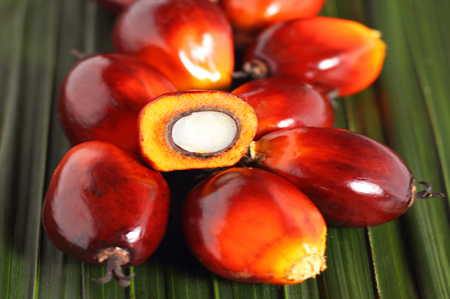Palm Enters Bear Market as Record Soybean Reserves Loom
Category: Oilseeds
 (Businessweek) – Palm oil entered a bear market after the U.S. government forecast record inventories of soybeans used to produce an alternative cooking oil.
(Businessweek) – Palm oil entered a bear market after the U.S. government forecast record inventories of soybeans used to produce an alternative cooking oil.
Futures dropped 2.1 percent to close at 2,298 ringgit ($722) a metric ton on the Bursa Malaysia Derivatives, the lowest level since Sept. 26. That leaves prices 21 percent down from the 2,901 ringgit settlement high on March 10, meeting the common definition of a bear market.
Palm, used in everything from food to biofuels, slumped 14 percent this year as usage in biodiesel trailed estimates amid expanding production. Record stockpiles of soybeans are adding to a global glut of cooking oils as increasing supplies send prices of corn and wheat into bear markets, cutting world food costs measured by the United Nations for a third month in June.
“There’s plenty of vegoils in the global market, or at least there will be when we get to the new crop in November and December,” Wayne Gordon, a commodities analyst at UBS AG in Singapore, said by phone. “There’s a lot of soybean oil coming into the market and palm oil would have to compete with that.”
U.S. farmers will harvest 3.8 billion bushels of soybeans this year, compared with 3.635 billion estimated in June and last year’s crop of 3.289 billion, the Department of Agriculture estimates. World output will be 304.8 million tons from a previous estimate of 300 million tons, while inventories will be a record 85.31 million tons, the agency said on July 11.
Longest Slump
Soybean oil declined 0.7 percent to 36.70 cents a pound on the Chicago Board of Trade, after dropping 1.7 percent on July 11. Soybeans slumped to $10.65 on July 11, the lowest since October 2010, and traded at $10.74 today. Prices declined for a 10th day through July 11, the longest slump since 1973.
Corn fell to the lowest level in four years today after the USDA said that global inventories will be 188.05 million tons before the start of the 2015 harvest, the most since 2000. Corn fell into a bear market this month and wheat entered a bear market in June on the outlook for rising global supplies.
“We’ll start to see some stabilization,” said Gordon. “India is starting to try and restock at these lower price levels. If India were to, over the coming months, make significant purchases that gives some confidence that palm oil at these prices is buying demand.”
Shrinking Discount
Indian refiners may increase imports from this month as a weak monsoon is hurting oilseed crops, according to Govindlal G. Patel, managing partner at G.G. Patel & Nikhil Research Co. Purchases by the South Asian nation, the world’s largest palm buyer, probably fell for a second month in June as traders turned to sunflower and soybean oils to benefit from their narrowing premium, a Bloomberg survey showed last week.
Palm’s discount to soybean oil shrunk 69 percent in the past year to about $87 a ton, data compiled by Bloomberg show.
Futures may rally less than earlier forecast as demand misses estimates and an El Nino starts later than expected, according to Dorab Mistry, director at Godrej International Ltd. Prices may climb to 2,800 ringgit by December if the weather event occurs from mid-August, Mistry said on June 26, cutting his March forecast for an increase to 3,500 ringgit.
Production in Indonesia may reach a record 30.5 million tons or more this year while Malaysia’s output will total an all-time high of 19.7 million tons to 19.9 million tons, according to Mistry. The two Southeast Asian producer’s together account for 86 percent of world supplies
El Nino Risk
The chances that an El Nino will form in the next two months are 70 percent, while the possibility one will happen by fall or early winter is 80 percent, the U.S. Climate Prediction Center said July 10. An El Nino brings drier conditions across Southeast Asia and Australia, potentially hurting palm oil output due to insufficient moisture.
“Weather risk is still very present at least on production for the first half of 2015,” said Gordon. Lower petroleum prices may hurt demand for palm in biodiesel, he said. Brent crude dropped 7.5 percent from a nine-month high in June as violence in Iraq escalated, easing demand for biodiesel.
An index of 55 food items tracked by the UN’s Food & Agriculture Organization in Rome fell 1.8 percent to 205.95 last month, 14 percent below the record set in February 2011.




